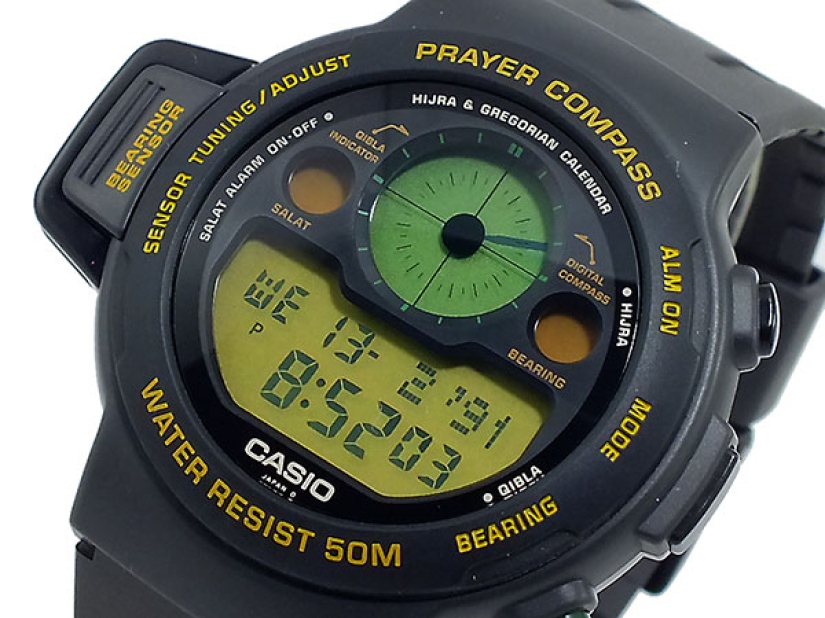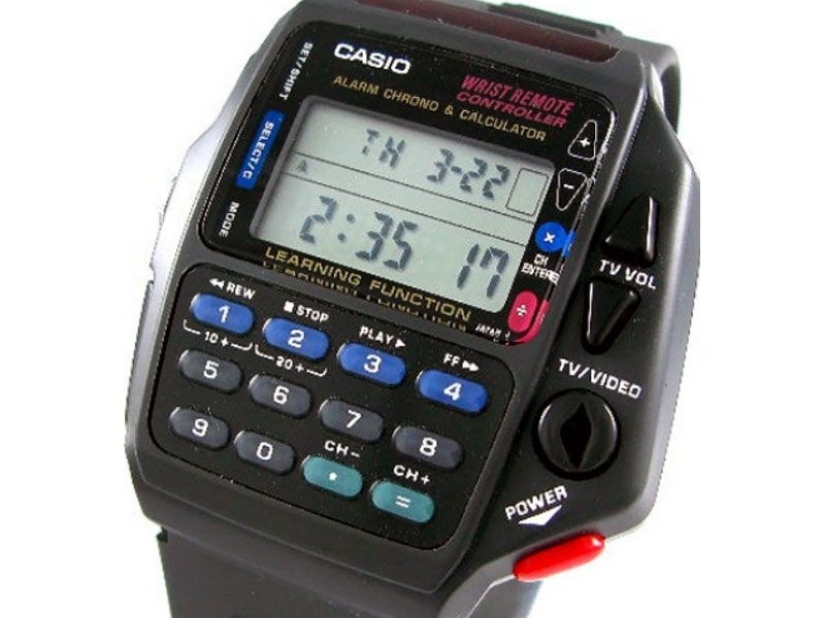How was the transition from a regular watch to a smart one
Categories: Technology
By Pictolic https://pictolic.com/article/how-was-the-transition-from-a-regular-watch-to-a-smart-one.htmlAt the end of the XIX — beginning of the XX century, the watch slowly moved from the pockets to the wrist. And already in the 1920s, the first attempt was made to make another device in the same form factor - an analog navigator, and in the second half of the last century, watch manufacturers began to supplement classic devices with new functions. They began to act especially actively after the appearance of the first digital devices of this type.
Let's remember what functions have been successfully (and not very) tried to add to a wristwatch, including navigation, calculators, cameras and phones.
 Source: Habr
Source: Habr
Navigation

In 1920, the world's first navigator appeared in the watch form factor. It was necessary to insert a special card into the device, and then twist it manually during the trip.

Such wrist compasses were used by German pilots during World War II.

There is no need to insert any scrolls into modern Garmin EPIX with GPS/GLONASS and a topographic map of Russia. But such watches cost more than 50,000 rubles, but they work without charging for up to 14 weeks.

Casio Prayer Compass was released specifically for Muslims. The compass helps to turn towards Mecca.

Casio now has six wristwatches in its arsenal, made especially for traveling representatives of this religion.
Engineering Calculators

Those of you who are now between 30 and 40 years old can remember the school years when a calculator watch was considered an amazing thing. But the first watches with a calculator appeared much earlier, in 1975, but I have not seen them in Russia. It was Pulsar.

And even earlier, in the XVII century, China had already made abacus in the form of a ring.

There are 41 buttons around the Citizen 9140A watch display. They helped to calculate the sine, cosine, tangent and do other mathematical operations. This certainly stylish gadget does not have many users — several hundred such watches have been released.

In 1985, Casio released the CFX-400, a watch with an engineering calculator.

In 2014, you had a chance to buy a prototype HP-01 watch with a calculator for just $14,500. But you missed it. The watch itself was made in 1977.
Telephone
Today, advanced smartwatches — namely Android Wear and Apple Watch devices — are rather an addition to a smartphone, simplifying some of its functions. Some will say that they satisfy a fictional need. An important intermediate stage was the watch, which itself served as a smartphone. And the fact that this type of device did not sell well enough led to the current state of the infrastructure of such gadgets.

In 1998, Samsung released the Samsung SPH-WP10, the first mobile phone watch. In fact, it was just a small phone that was attached to the arm. It was possible to speak using a wired headset.

Another version of such a device was introduced by NTT in 1999.

In 2001, Samsung brought a new watch phone to CES in Las Vegas. They worked hard on the design, but still the company could not conquer the market.

But Samsung didn't want to give up, and in 2009 began selling the S9110. Again — a mobile phone, not a "mobile assistant". Failure again.

LG also offered similar devices. The Watch Phone device with a touchscreen display had not only a built-in speaker and MP3 player, but also supported voice activation of the call, was equipped with a VGA camera, Bluetooth and eight dial options. The gadget supported 3G+.
Home appliance management
Once upon a time, when Motorola had not yet made the Moto 360, and Apple did not think about the development of smart watches, several famous manufacturers from the watch world and the software world tried to include wrist devices in the infrastructure of the "smart home".

Casio CMD-40 is not only a valuable fur stylish wristwatch, but also a remote control for home appliances. Released in 1995. The photo shows an infrared port in the upper part of the case.

And in 2003, Bill Gates introduced a watch with Smart Personal Object technology. This technology is designed to control household appliances and personal electronics.
Camera

In 2000, Casio built a camera into the watch. The monochrome display of the Casio WQV-1 watch with a resolution of 120x120 pixels, transmitting 16 grayscale, allowed the pictures to be viewed.

The continuation of the line was the Casio WQV-10 — already with a color screen and a color camera. The device's memory was enough for 100 photos with a resolution of 176x144 pixels. The color display is 78x80 pixels. A fun feature, but with the advent of mobile devices with cameras, such devices have lost relevance.

But these were far from the very first cameras in the watch form factor. There was a Steineck ABC camera in Germany in the late 1940s.
Sport

The first company in the production of heart rate monitors was Polar, which invented a heart rate monitor for the Finnish national ski team in 1977. And received a patent for an "Optical pulse sensor".

Three years later, the company issued the world's first sports smartwatch Polar Sport Tester PE 2000. From the pleasant in them — the actual clock, alarm clock, heart monitor and a couple of other functions.

In 1985, Polar patented wireless heart rate measurement and two years later released the PE 3000 — a watch that allows you to analyze the data obtained during training using a computer.

Released by Casio in 1991, the BP-400 could measure the heart rate using a sensor on the front panel. And they looked more like a classic watch, not a sports one. Someone will find this design relevant today.
Music

Surprisingly, the first watch with a player appeared only in 2000. And again — Casio, model WMP-1V — Wrist Audio Player.

This is a Panasonic R—72S Toot-a-Loop Bracelet Radio from Japan, made in 1972. Very similar to Jawbone — both in color and shape, don't you think?
Conclusion
When you write articles on such topics, you always need to remember: an article where gadgets are in chronological order becomes incomplete after a couple of months. New gadgets are constantly appearing, manufacturers (together with marketers) are constantly inventing new needs for us, which they themselves are trying to satisfy. It's hard to say whether it's good or bad. Looking back at history, one can think why the industry looks like this and not otherwise, why some functions remain relevant — like heart rate monitors, while others go away like watches with cameras.
Keywords: 20th century | XX century | Gadgets | Wristwatches | Smart devices | Electronics
Post News ArticleRecent articles

This story began more than 15 years ago, when Serbian photographer Dusan Stojancevic took a picture of Belgrade from his window ...

In the case of life and death, most living beings are ready to sacrifice a lot in the name of salvation. People are no exception ...
Related articles

Bidermanas Izis (Izis Bidermanas) – the most famous street photographer of the twentieth century. Throughout his life, the ...

The beauty of women is well judged many years later, when in human memory remain the most vivid images. Even today, these women are ...

In the 50‑ies of the last century, the capital began to expand. It was annexed areas Fili, Mnevniki, Moscow, Sviblovo, textile, ...

American artist Mark Arian is one of the most famous contemporary painters in the United States. His works can be seen in many ...